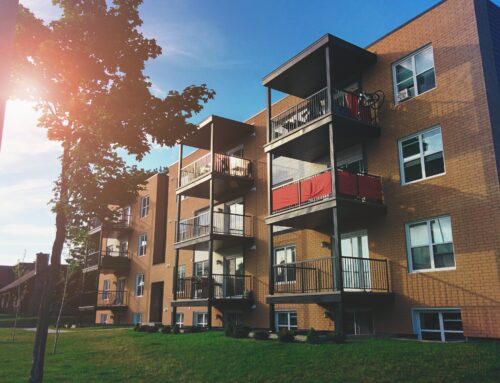For the vast majority of human history, our ancestors cohabited in small clans of 40 to 50 individuals, living in perfect harmony with nature. But today, most people live in cities with neighbors numbering in the millions, all plundering the planet for food, energy and parking space.
Yet, somewhere, in the backs of our primate brains, we still long for that sense of closeness and community, to be surrounded on a daily basis by familiar faces whom we know and trust. An interest in returning to this communal way of life has been growing in recent years, but it’s not an easy thing to implement in a city the size of Montreal.
The Cite Angus Project in Rosemont-La-Petite-Patrie is currently working to bring us the best of both worlds. This innovative complex of 120 condominiums and townhouses addresses the need for safer, more intimate and family friendlier housing, while also meeting the highest standards of eco-conscious construction. And it’s all happening in one of Montreal’s most interesting and diverse neighborhoods.
All in the family
Unlike most typical condominium complexes, the Cite Angus Project really emphasizes a better quality of life for families. All the units have two, three or four bedrooms, designed to attract families rather than single professionals. The majority of condos exceed 1000 sq. ft., and every floor plan includes plenty of storage room for toys, clothes, games and even a space for the baby stroller.
Perhaps the most attractive feature is the huge courtyard in the center of the complex, with trees, green space and lots of room to run and play. Most units, with their generously sized terraces, face inward on the courtyard, so parents can keep their eyes and ears on the kids rather than the hum of city traffic. And directly across the street, the Jean-Duceppe Park even has its own bicycle repair station.
Montreal’s thorough network of public transportation makes getting to and from the Cite Angus easy and convenient. But the central location puts it within walking distance of a great variety of eateries and boutiques, as well as a SAQ and a pediatric clinic.
Affordability was another topic of concern in the proposal of this innovative housing project, and prices range from $285,000-600,000, still quite reasonable for central Montreal. Financial assistance is also available for families with children.
Go Green
Even if you’re not in the market for a condo or townhouse for yourself and your family, you can be glad that Montreal architects and planners are advancing the agenda for more sustainable and ecological construction. The mixed use project has received platinum-level certification in the LEED V4 program for sustainable neighbourhoods. What was once the polluted site of heavy steel industry, the Agnus railway yard has now been transformed into one of the greenest projects in the city.
An energy exchange system between buildings, called “the loop”, will reduce energy consumption by about 40 percent. Meanwhile, the buildings are also designed to capture rainwater to use in irrigation and car washes, reducing consumption of drinking water by roughly 40 percent. Extensive green space, an urban woodlot and ecological footpaths will also improve air quality and enhance biodiversity.
And, don’t worry, there will be plenty of parking underground, including three charging stations for electric vehicles.
The Cite Angus Project should be complete by mid-2020 and more than three quarters of the units have already been sold. Contact Cite Angus directly for more details.
Communal Living
While the expansive interior courtyard and green space of Cite Angus will encourage more interaction and socialization between neighbors, this is not a communal living project. And while the concept of Co-Housing has grown popular in Canada, Quebec appears to be one of the only provinces in country without a co-housing community.
In most co-housing communities, residents typically own their own individual homes. Another portion of the community is public or shared, such as office space, a library, a garden, and a community kitchen, for example. Co-housing residents usually participate in the planning, design, ongoing management and maintenance of their community, meeting frequently to address these issues. Co-housing neighbourhoods generally offer environmentally sensitive design that favors pedestrians and children’s play areas. Most communities range from 10-35 households emphasizing a multi-generational mix singles, couples, families with children, and elders.
For further reading, check out the following articles and resources:
- Moving to Canada with kids
- Finding daycare in Quebec
- EcoVillages in Quebec
- 9 Green Stores in Montreal
- Montreal Real Estate tips and trends
- Neighborhoods of Montreal
- Canadian Housing Network
Photo Credit: Cite Angus







Leave A Comment